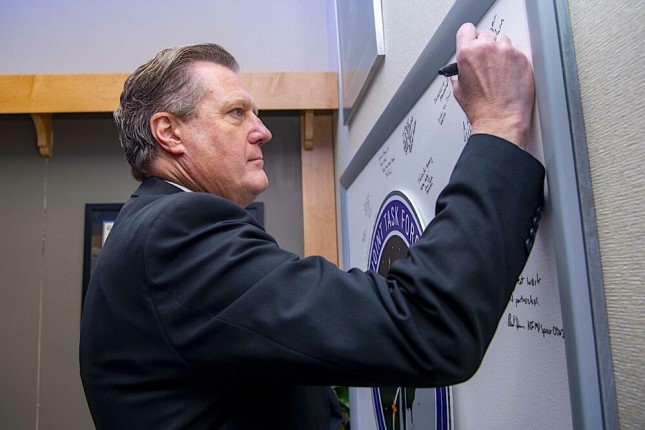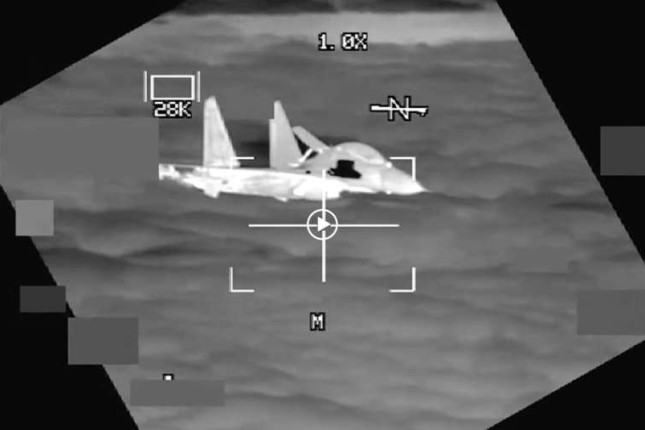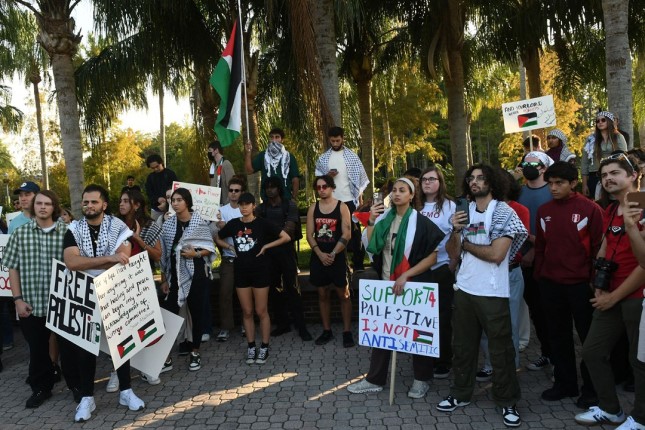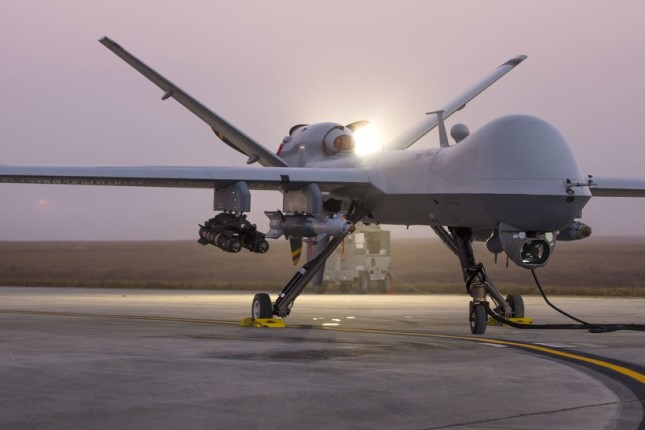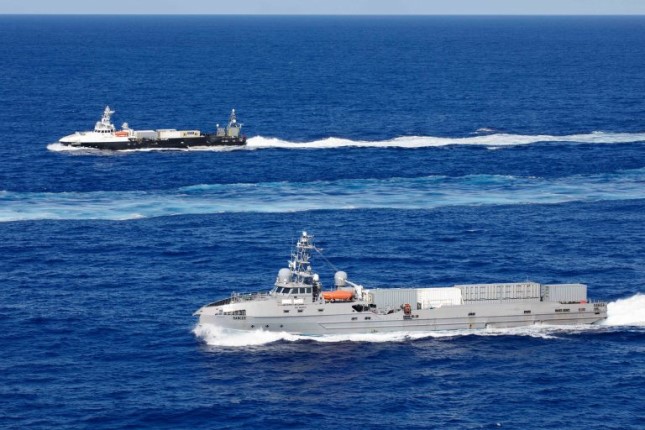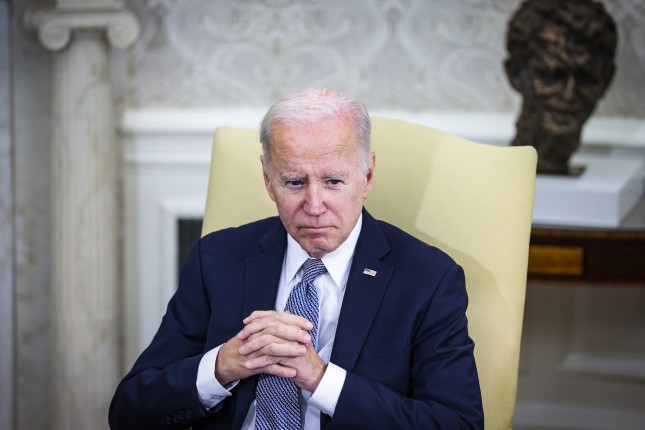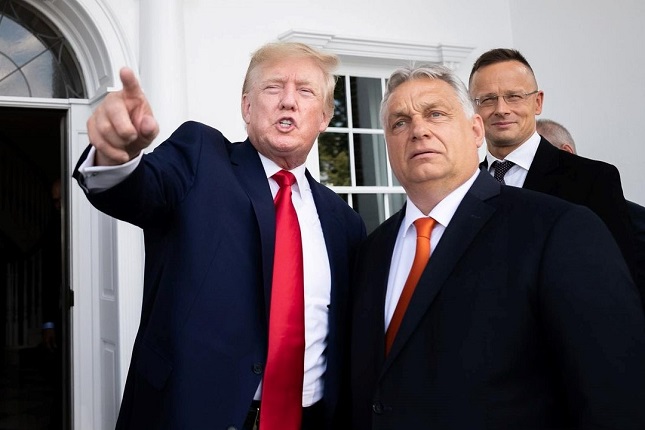Earlier this week U.S. Representative Mike Turner, a Republican from Ohio who serves as chairman of the House Permanent Select Committee on Intelligence, took the unprecedented step of making available a raw intelligence report to all members of Congress.
Turner issued a public statement which stated that the intelligence “contained information concerning a serious national security threat,” and requesting that President Biden “declassify all information relating to this threat so that Congress, the administration, and our allies can openly discuss the actions necessary to respond to this threat.”
A day after Turner released his statement, White House national security spokesman John Kirby took to the podium to confirm that U.S. intelligence officials have information that Russia has obtained a capability that would enable them to attack U.S. satellites, but that this capability was not yet operational.
“First this is not an active capability that’s been deployed and though Russia’s pursuit of this particular capability is troubling, there is no immediate threat to anyone’s safety,” Kirby said. “We’re not talking about a weapon that can be used to attack human beings or cause physical destruction here on Earth.”
According to Kirby, the Russian anti-satellite capability is space based and, if deployed, would violate the 1967 international Outer Space Treaty, which both Russia and the United States, along with 128 other nations, are signatories to.
While Kirby refused to state whether the Russian capability was nuclear, the Outer Space Treaty specifically bans the deployment of “nuclear weapons or any other kinds of weapons of mass destruction” in orbit or “station weapons in outer space in any other manner.”
For its part, the Russian government has dismissed the talk of a new Russian space weapon as little more than a ruse intended to pressure the U.S. Congress to support aid for Ukraine (the U.S. Senate has approved a $64 billion aid package to Ukraine, but it is currently held up in the House of Representatives, where Speaker Mike Johnson has said it is “dead on arrival.”)
“It’s obvious that Washington is trying to force Congress to vote on the aid bill by hook or by crook,” Kremlin spokesperson Dmitri Peskov said. “Let’s see what ruse the White House will use.”
US Satellite Project
While Turner is a staunch supporter of the aid package for Ukraine, the evidence suggests that his gambit regarding the release of intelligence about an emerging Russian anti-satellite capability has nothing to do with Ukraine, and everything to do with a new U.S. satellite system currently being deployed which serves as the foundation upon which the entire future war-fighting capability of the United States is built.
The United States currently maintains an array of satellites surrounding the earth that support intelligence collection, communications connectivity, navigation and guidance and control, without which the U.S. military would not be able to operate as envisioned in supporting the national security needs of the nation.
These satellites, however, are vulnerable to existing anti-satellite weapons possessed by several nations, including Russia and China, and possibly North Korea and Iran.
The U.S. military is rightfully concerned about the possibility that, in any future potential conflict, an enemy possessing anti-satellite capability will seek to destroy the existing U.S. satellites, effectively blinding U.S. forces and disrupting critical navigation and communication capabilities which help provide U.S. military forces with a technological superiority on the battlefield.
Enter the “Proliferated Warfighter Space Architecture”, or PWSA, a program undertaken by the Space Development Agency to launch hundreds of networked satellites into low-Earth orbit. The satellites will support a wide variety of military missions, including data transmission, communications and ballistic missile warning and tracking.
The PSWA is mission critical to the success of the Department of Defense’s Joint All-Domain Command and Control concept, which as designed will “enable the Joint Force to use increasing volumes of data, employ automation and Artificial Intelligence (AI), rely upon a secure and resilient infrastructure, and act inside an adversary’s decision cycle.”
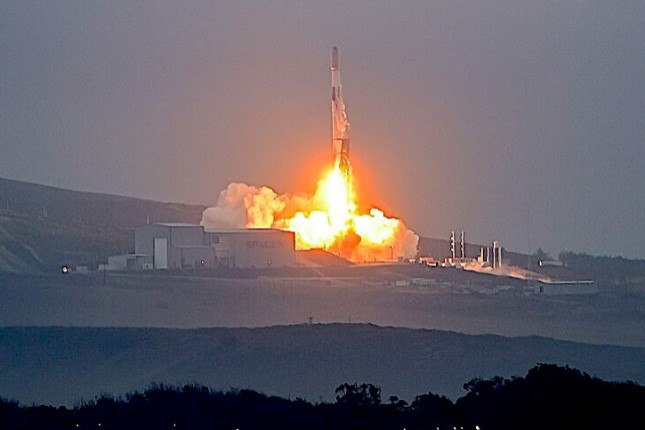
A SpaceX Falcon-9 rocket lifts off from Space Launch Complex 4E at Vandenberg Space Force Base, Calif., Sept. 2, 2023. This mission carried the Space Development Agency’s second round of Tranche 0 satellites for its Proliferated Warfighter Space Architecture (PWSA). Photo: U.S. Space Force / Airman 1st Class Ryan Quijas.
The PSWA, which is anticipated to cost some $14 billion over the course of five years, will eventually include hundreds of optically-connected satellites divided into two basic categories.
The first provides “beyond line-of-sight” (i.e., over the horizon) targeting for ground and maritime time-sensitive targets, enabling supported units to detect targets, track them, and enable them to be destroyed. The second capability is similar to the first, but is designed to shoot down hostile missiles after they have been launched.
Twenty-eight PWSA satellites were launched last year — ten in March and 18 in June. On Wednesday — the same day Turner sent out his cryptic threat message — a SpaceX Falcon 9 rocket launched out of Cape Canaveral in Florida carrying two more PSWA satellites.
While some media outlets — including The New York Times — believe that the connection between the PSWA launch and Turner’s decision to publicize Russia’s emerging anti-satellite capability is purely coincidental, there is an obvious cause and effect relationship that cannot be ignored that suggests otherwise.
First and foremost, the intelligence that Turner was referring to was not new, but rather familiar to the small circle of Representatives and Senators possessing both the security clearances and the need to know to access this information.
Moreover, this particular intelligence was scheduled to be discussed by the White House and the so-called “Gang of Eight” — the leaders of each of the two parties from both the Senate and House of Representatives, and the chairs and ranking minority members of both the Senate Committee and House Committee for intelligence — the following day, Thursday.
By making the issue public, Turner was clearly signaling his frustration over what he believed to be a lack of urgency on the part of both the White House and the Gang of Eight in addressing the emerging Russian anti-satellite capability.
The source of Turner’s frustration could logically extend to the Department of Defense placing so much emphasis on a multi-billion-dollar investment which appears to have been made moot by the Russian anti-satellite development.
The PSWA was designed to be invulnerable to existing anti-satellite weaponry, operating as it did in low-earth orbit and possessing sufficient redundancy along with the ability to rapidly replace any satellites that might cease to function or be taken out by adversaries.
However, current anti-satellite technology involves classic point-to-point interception technology that uses kinetic energy (i.e., direct impact) or explosions within the immediate proximity of the target to destroy the satellite. The “swarm of satellites” approach of the PSWA makes existing anti-satellite weaponry impractical when it comes to disrupting the operations of the PSWA.
The intelligence that Mike Turner is so interested in appears to relate to a Russian weapon designed to detonate a nuclear device in outer space. Such a weapon would destroy much of the PSWA network, immediately rendering impotent much of the U.S. military capacity.
Turner’s concerns didn’t center only on Russian capabilities, but also the Department of Defense insisting on continuing to develop and field the PSWA satellites even though Russia had invalidated the utility of the network in any future conflict involving Russia.
Outer Space Treaty

Sculpture in garden of U.N. headquarters in NY or St. George slaying a dragon created from the shards of two dismantled nuclear missiles, a Soviet SS-20 and an American Pershing II, which were destroyed under the terms of the INF Treaty in 1987. Gift of the Soviet Union in 1990. Photo: U.N. Photo.
The White House has indicated that it will be reaching out to the Russians about this new weapons capability. Given the existence of the Outer Space Treaty, the White House will more than likely accuse Russia of operating in violation of that treaty.
But the United States is not immune to criticism in this regard. Indeed, the Outer Space Treaty makes repeated reference to the “peaceful uses of outer space”, which suggests the “nonmilitary” use of space, or at least activities that reflect “nonaggressive” behavior.
The PSWA, operating as it does as the primary facilitator of the Department of Defense’s Joint All-Domain Command and Control strategy, is the literal manifestation of “military” use of space and/or “aggressive” behavior.
In short, the United States once again uses its treaty relationship with Russia to pursue the sustainment of unilateral military advantage as opposed to seek and maintain an environment conducive to peaceful coexistence.
Indeed, the Russians have hinted at this very position in a memorandum appended to a July 2021 report by the U.N. secretary general on reducing threats in outer space.
“At issue,” the Russian memorandum noted, “is the development by certain States Members of the United Nations of a space-based missile defense system (including means of interception) and of means of unauthorized interference with orbital infrastructure facilities. The placement in orbit of a large constellation of small satellites also raises questions. There is a growing potential for these tools to be used to compromise the orbital objects of States Members of the United Nations. Furthermore, the mass deployment of such spacecraft hinders the ability of other States to safely launch space launch vehicles and does not contribute to the long-term sustainability of space activities.”
Russia sought new legal commitments and proposed “reaching a principled agreement on the prevention of an arms race in outer space and the preservation of outer space for peaceful purposes and introducing a complete and comprehensive ban on strike weapons in outer space and on any land-, air- or sea-based weapons designed to destroy objects in outer space.”
The United States, in keeping with its past practice of creating ambiguity regarding specificity when it came to international agreements, sought voluntary, non-legally binding “norms, rules and principles of responsible behavior” for space operations designed to complement existing international law, as opposed to creating a new body of binding legal obligations which might interfere with ongoing defense-related activities, such as the PSWA.
These competing diplomatic postures will more than likely be reflected in any future discussions that the United States and Russia have about this unfolding situation.
Future of Arms Control
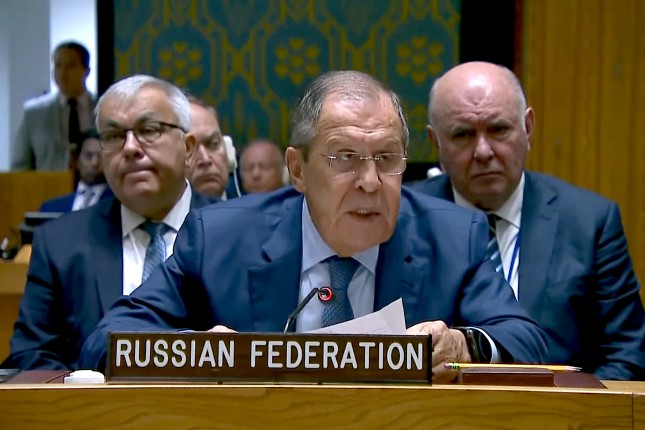
Russian Foreign Minister Sergei Lavrov at U.N. Security Council in September 2023. Photo: U.N. TV Screenshot.
Pranay Vaddi, the special assistant to the president and senior director for arms control disarmament and nonproliferation at the National Security Council, noted in an event hosted by the Center for Strategic and International Studies on Jan. 18, that “arms control is and continues to be a cornerstone of international security, from a U.S. perspective.”
Russia, Vaddi said, sees “the idea of engaging with the United States on Strategic Arms Control, which they view as being on U.S. terms, as not in their interest if that conversation cannot include some of their other priorities as it relates to the map of Europe, Ukraine itself, and our policy towards Russia outside of arms control,” adding that the Russians have “linked kind of other politics to arms control in a way that has not been done in the post-Cold War era.”
Special assistant Vaddi isn’t wrong — Russian Foreign Minister Sergei Lavrov has stated that Russia believes that current U.S. efforts to reinstate arms control is simply an exercise designed “to establish control over our nuclear arsenal and minimize nuclear risks for itself.”
The future of arms control, Lavrov noted, is contingent on “the West fully renouncing its malicious course aimed at undermining Russia’s security and interests,” altering its stated policy objective of achieving the strategic defeat of Russia in Ukraine.
Lavrov has taken umbrage over U.S. demands to resume inspections of Russian strategic nuclear sites under the provisions of the New START treaty, noting that the American position amounts to saying, “we have declared you an enemy, but we’re ready to talk about how we could look at your strategic nuclear arsenal again, that’s something different.”
Given that the U.S. has withdrawn from a multitude of Cold War-era arms control agreements, including the anti-ballistic missile treaty, the intermediate nuclear forces treaty, and the open skies treaty, and is seen by Russia as negotiating in bad faith the New Start treaty, it is only logical that Russia will look askance at any effort on the part of the U.S. to try to shield what is clearly a military-related activity (the PSWA) behind the outer space treaty.
In short, the prospects of any meaningful engagement between the U.S. and Russia over concerns about a nuclear anti-satellite weapons system still in the development stage is slim to none.
It is here that the folly of Turner’s gambit becomes clear. The U.S. intelligence picture of the emerging Russian nuclear-armed anti-satellite weapon was still in the developing stage. Indeed, the intelligence that Turner was seeking to have declassified has been described as “raw”, as opposed to finished analysis.
This implies that the sources and methods used to collect the intelligence in question would be obvious to all who had access to the intelligence.
While Turner’s statement did not contain anything specific in terms of the intelligence in question, it did set off a media firestorm which, given the realities of Washington, D.C., invariably leading to detailed disclosures which have more than likely compromised the source of the intelligence in question.
This means that at a time when U.S. policy makers require periodic updates as the status of the Russian weapon, the intelligence community is flying blind. This is the worst possible outcome, since now that intelligence has been politicized, it will require decisions to be made which will now have to occur in an informational vacuum.
Turner’s actions were irresponsible in the extreme, bordering on criminally negligent. At a minimum he should be stripped of his security clearances and expelled from the intelligence committee. At a maximum he should be prosecuted under the same legal doctrine that has put Julian Assange behind bars.
Main photo: Rep. Mike Turner © Tiana Williams / U.S. Air Force.
Source: Consortium News.
